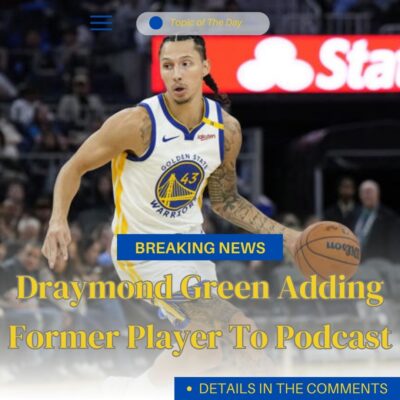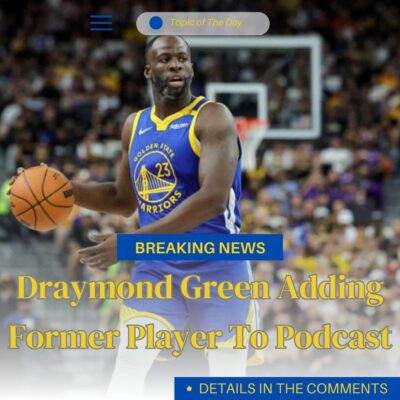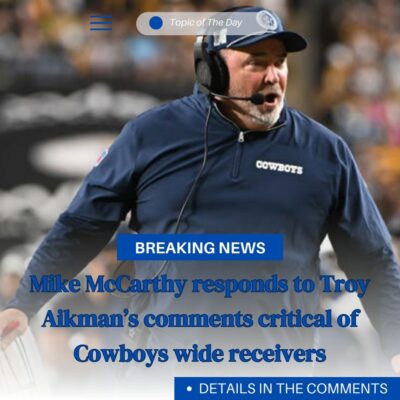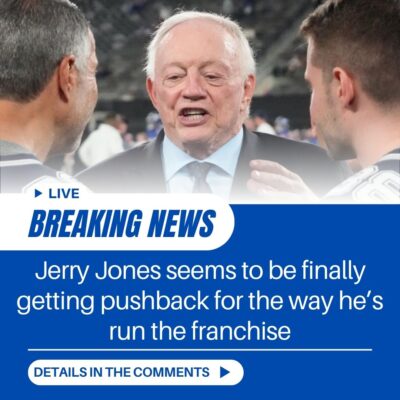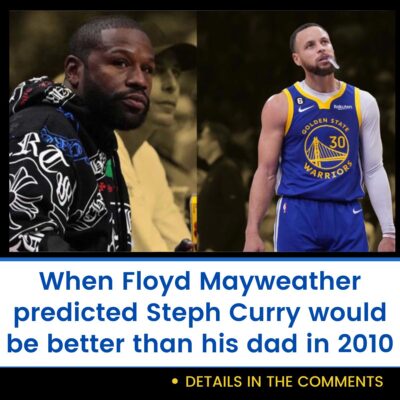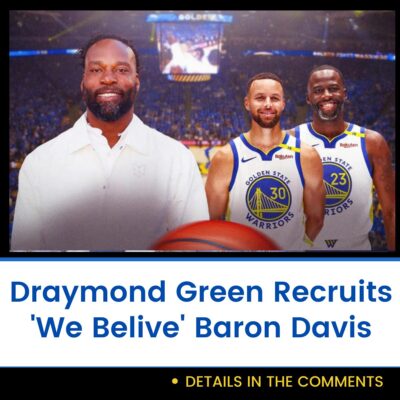Things are winding down a bit as we get closer to the annual NFL break (enjoy it while you still have it, everyone!). But we’ve still got plenty for you in this week’s offseason takeaways …
And this is why you do deals earlier in the offseason, rather than later. By now, you’ve gotten the news—Justin Jefferson is staying with the Minnesota Vikings, landing a well-deserved four-year, $140 million extension ($110 million guaranteed) that raises the bar not just for receivers, but all nonquarterbacks. And among the biggest winners are the Philadelphia Eagles, Miami Dolphins, Detroit Lions and Houston Texans, who already did deals for DeVonta Smith, Jaylen Waddle, Amon-Ra St. Brown and Nico Collins this offseason.
But before we get there, let’s dive in on what this means for Minnesota. First, it’s a good sign of the team taking advantage of the new window it’s in, with Kirk Cousins gone and the team having just drafted a quarterback in the first round. The Vikings are swallowing $28.5 million in dead cap for Cousins this year, and nearly $15 million for Danielle Hunter, but having J.J. McCarthy on a rookie deal gives Minnesota financial flexibility.
Using that flexibility to take care of your own, and creating the best environment for McCarthy, is just smart business. And this contract allows for Jefferson to do another big deal before his 30th birthday—and maybe well before it—which means he’ll maximize his earning potential as an NFL player. A side benefit: He sure did his former teammate Ja’Marr Chase a favor, too.
Which is why the other teams doing receiver deals this offseason were smart to do them early.
Waddle’s deal reflects it. The Dolphins’ star scored a three-year, $84.75 million extension—landing it two years before the expiration of his rookie deal (after Miami picked up his fifth-year option). The contract runs through 2028, with the first two years fully guaranteed, and the third and fourth years carrying heavy guarantees that vest a year early.
So he’ll almost certainly get the $77.319 million he’s due over the next four years, with 2028 a de facto team option. That’s good for Waddle because he was due $19.94 million for the next two years, which means this gives him more than $57 million for adding two years to his contract. It’s good for the Dolphins, too, because they get to manage those numbers at less than $20 million per for the next four years. The $26.374 million Waddle is due in ’28 (he’ll turn 30 that November) will probably be a bargain by the time we get there.
That said, the cash flow isn’t close to what Jefferson is getting. Nor is what St. Brown got in Detroit ($87.37 over the next four years), Collins got in Houston ($75.86 million over four years), or what Smith ($70 million over the next four years) or even A.J. Brown ($80 over the next three years) received in Philly. It’s fair to say that those negotiations would’ve been framed differently if the Jefferson deal was done.
So good on the Vikings for taking care of Jefferson, and good on the Lions, Dolphins and Eagles for getting ahead of the market. And good luck to the San Francisco 49ers with Brandon Aiyuk and the Dallas Cowboys with CeeDee Lamb.
The Los Angeles Rams take efficiency in their workplace pretty seriously. The team’s move from UC-Irvine in Orange County—their camp site since returning to Los Angeles in 2016—to Loyola Marymount on the west side of L.A. was completely driven by the football team’s ability to get work done.
During the Rams’ first three years in Irvine they stayed in the dorms, which gave everyone a very convenient setup. But over time, the housing there wasn’t close to what a pro athlete in this age of sports science is accustomed to. So in 2019, while they kept practicing on campus, they set up the rest of their operation at the VEA hotel, a posh setting about 10 minutes away.
The problem there started with the 2020 CBA’s rules cutting the allowable scheduled daily hours with players from 12 to 11. With two back-and-forth trips from the hotel to the fields each day, and all the logistics that went into that, the Rams found that they were losing between an hour and a half and two hours every day due to the commute.
So the team discovered that Loyola Marymount, which is also significantly closer to team headquarters in Thousand Oaks, had brand-new dorms on campus that would cut right through the efficiency issue with an easy walk to the practice fields and, theoretically at least, give the players and coaches those couple of hours lost back every day in Orange County.
Another fun aspect of it? For their first six years in L.A., the Rams and Chargers, though headquartered almost two hours apart, had their training camps 10 minutes from each other. With the Chargers moving into their new facility in El Segundo, and the Rams making this move, both teams will be in the shadow of LAX and—as has been the case—about 10 minutes or so apart.
As we mentioned last week, the Saints—while their new facility in New Orleans is being renovated—will hold camp in the Rams’ old Irvine digs, and the Las Vegas Raiders, with ex-Chargers GM Tom Telesco in his first year in Vegas, will be where the Chargers were, at the Jack Hammett Sports Complex in Costa Mesa. The Cowboys, of course, are still in Oxnard.
The NFL and NFLPA need to leave well enough alone with the offseason calendar. That’s not to say there shouldn’t be tweaking. But as we said in the mailbag last week, digging into the one break in the calendar that coaches, scouts and players get to unplug is a bridge too far—especially if the owners ram through, as they’re expected to, an 18th regular-season game.
I’ll be clear: I haven’t communicated with a single coach, scout or front-office person who thinks it’s a good idea. All pointed to how their schedules run pretty much straight through from July to January or February without a break. Weekends are gone for that stretch. Seven-day work weeks are standard. Holidays are bastardized, and that’s if you’re not playing on them (in which case they disappear like Saturdays and Sundays).
Families feel that with the silver lining coming in late June and early July.
“I think it’d totally turn the lives of scouts and coaches upside down.”Top exec for a perennial contender
So if you start OTAs or offseason workout programs—things that aren’t optional for folks in football operations—in mid-June, the league and union would be throwing a lot of people who make the NFL go under the bus. And in the name of … what exactly?
“I think it’d totally turn the lives of scouts and coaches upside down,” said one top exec for a perennial contender. “That window is a time when people can reconnect with their families. It lines right up with the school calendar. And if we’re honest, it keeps guys’ relationships with their wives and kids in a good spot, because no matter how hard the season is, and even a big part of the offseason can be, you’re always going to have those six weeks or so.
“They’re gonna do what they’re gonna do, but this idea would be really hard on families.”
Here’s a sampling of more text reactions I got in the aftermath of the news, delivered by Tom Pelissero of NFL Network (of course, this stuff isn’t directed at him, he’s simply the messenger here) …
• “F—ing terrible. Really bad for families.”
• “So the coaches’ time off will be when my kids are still in school.”
• “It doesn’t make any sense. They want to start the marathon even sooner?”
• “We’re all pawns in the greatest reality TV show running.”
And that’s the less explicit stuff.
One of the other common reactions was how this, in practice, would be worse for players than they realize.
Having February through June off may seem like a nice thing for younger players who don’t have kids. But it’s not like they won’t have to work through that period. And for a lot of these guys, that’ll mean seeking out NFL-level coaching and training off-site, which would cost guys tens of thousands of dollars. The price for not doing those things, of course, for a lot of guys could wind up being roster spots.
Then, there’s the aforementioned fact that starting the marathon in the middle of June would mean most players (because, in reality, this stuff won’t really be optional for the great majority of them) losing their summers.
And I could keep going, as I did last week. But I think you get the point by now.
The Chicago Bears are a great pick for Hard Knocks. I was able to go back and forth a little with some Chicago folks on it and, first and foremost, if you’re being realistic, you know there aren’t a lot of front-office folks with teams who would be fired up with the prospect of the HBO and NFL Films cameras coming in.
That said, Chicago coach Matt Eberflus has been through this before. He was the Indianapolis Colts’ defensive coordinator in 2021, when that year’s team was the first to do the in-season version of Hard Knocks. That, for obvious reasons, was a far more delicate situation than this one. And while few coaches would choose to have the cameras following them, Eberflus did get to see first-hand how the HBO–NFL Films crews are able to gather content while avoiding being intrusive, or taking up any space a team might need.
So what story lines does HBO have to work with? Here are five …
1) Caleb Williams. Duh.
2) Rome Odunze learning from DJ Moore and Keenan Allen.
3) Tyson Bagent and his arm-wrestling dad.
4) The reimagining of the Bears, behind Eberflus, GM Ryan Poles and president Kevin Warren, as a young team tries to turn the corner and the business side seeks a new stadium on the lakefront near Soldier Field.
5) The veterans of the defense, and maybe Kevin Byard in particular—a big personality who’s replacing Eddie Jackson, and will try to regain his footing after he was traded from the Tennessee Titans (where he’d spent his whole career) to Philly last year.
Should be a fun one.
Maybe it only interests me, but the Buffalo Bills have given two roster spots this offseason to guys who’ve really never played football. The first was seventh-round pick Travis Clayton, a former rugby player whom Buffalo plucked from the NFL’s International Pathways program. The second, wrestler Gable Steveson, came aboard last week, with the Olympic gold medalist and two-time collegiate heavyweight national champion signing a three-year deal.
The Bills are projecting Clayton as an offensive tackle and Steveson as a defensive tackle.
I dug around a little, and really what ties these two together is athletic traits. Clayton is a freakish athlete who ran a 4.79 40-yard dash at 6’7″ and 303 pounds, and his background wasn’t all that dissimilar to Jordan Mailata’s when Philly spent a seventh-rounder on a player who’d become their left tackle. Conversely, with Steveson, they saw an explosive 6’1″, 275-pounder, who showed, despite having less than ideal physical measurables, an understanding of leverage and functional strength to make up for it.
Time will tell whether these acquisitions work out. But, to me at least, it’s a good use of a couple of your 90 offseason roster spots, particularly with Buffalo resetting its financials this year, and needing a bargain or two for the next few years.
Give Ben Johnson credit for not tiptoeing around the elephant in the room. The Lions’ offensive coordinator knows what people—not just outside the NFL, but with teams, too—thought of how his candidacy for head coaching jobs, and Washington’s in particular, went last year. He also could’ve sidestepped the whole thing altogether, and a lot of guys would have, in his first media availability of the offseason. Instead, he opened a vein.
And in doing so, he expressed feelings a lot coaches have but won’t make public.
“Something that really resonates with me is, O.K., eight openings this past year—what would you set the over/under at in three years? How many still have jobs?” he said last week. “Shoot, I’d put the over/under at 4.5. I’d say there’s a good chance five of them are out of jobs in three years. And so, when I look at it from that perspective, if I get the opportunity to go down that road, it’s about how do I get to that second contract, how do I set myself up when the stars need to align?
“I’m not gonna do it just to do it. I love what I’m doing right now—love it. I love where I’m at, my family loves where we’re at, love the people we’re doing it with. So I’m not willing to go down the other path yet, unless I feel really good about how it’s going to unfold.”
Then, he dove into more specifics.
“It’s ownership, it’s staff, it’s my vision of how I can make it work with how I am,” he said. “Part of me, too, I love play-calling. And so if I took a head-coaching job, I’d want to be a play-calling head coach. Well, there’s only so much time during the week. So what’s it going to look like Monday through Sunday in that regard? I just want to make sure everything’s nailed down. And listen, there’s an adjustment period for everybody that takes that job. They’re learning on the fly.
“But I think the more that you have set, and feel good about, that gives you the best chance.”
Now, on one hand, jobs come open for a reason, and it’s usually not because everything is ideal and set up for the next head coach. Obviously.
That said, what it seems to me like Johnson is saying is that, seeing the infrastructure and synergy that the Lions have created, has convinced him about the importance of having the right people and fit around him. Which means having people around him so he can do his job the way he needs to in order to win (with play-calling being a part of that).
The risk, of course, is that your name doesn’t stay hot forever, and you can only say no so many times. But it’s pretty clear now that the stability and comfort level he has in Detroit has made that a risk worth taking.
London mayor Sadiq Khan went to bat for his city to host a Super Bowl last week, and I think it’d be a pretty awesome opportunity for the sport in the U.K. We’re in the 18th season of the NFL’s International Series, and this year the league will hold its 37th, 38th and 39th regular-season games in London since 2007.
Over that time, the league has invested in a new soccer stadium for a Premier League club (Tottenham Hotspur) to create a venue more geared toward the American game, gained a foothold for the Jacksonville Jaguars to go twice a year, and expanded to Mexico, Germany and, this year, Brazil, with Spain on tap for 2025. And so it’d be hard to argue with the success of the model the NFL is using.
At the same time, it’s still a niche sport in London.
If that’s ever going to change, the league needs to continue being creative in getting people to watch—and one thing U.S. sports leagues have learned is that fans overseas respond to stars and to events.
The Super Bowl would deliver both, with a week of build-up flowing into a game that would be a showcase for the U.K. and the NFL alike. That teams travel in the Sunday or Monday before anyway would help to minimize any competitive issues you’d normally get from the trip, and having the players and coaches over there, and going through all the media paces they do during a normal Super Bowl week, would enhance the profile of the sport and all the individuals in it.
The presence of Kobe Bryant and LeBron James, and Michael Jordan before them, was massive in the NBA’s ability to export its game all the way into the Far East. Simply put, positioning its stars similarly, against the league’s traditional team-over-player mythology and ethos, would almost certainly pay off, if not at the level it did for the NBA.
One logistical challenge, of course, would be the start time. The game generally kicks off at 6:30 p.m. Eastern, which wouldn’t work in London. But as I see it, getting started at 3 or 4 p.m. ET to accommodate the five-hour time difference would be a small price to pay for what could result from going there.
Here’s hoping it happens.
Under-the-radar signing of the week: 49ers receiver Jauan Jennings agreeing to a two-year deal that could end up topping $15 million. Jennings entered the offseason a restricted free agent, and signed his tender, so this didn’t need to happen. But I really like it for both sides. Jennings, who’s made less than $3 million as a pro, gets around $10 million for tacking another year on to his contract and is still set to be a free agent at 28 in the spring of 2026.
The team, meanwhile, now has Deebo Samuel, Ricky Pearsall and Jennings under contract for the next two years after entering the season with only Samuel locked up past 2024. That gives the Niners some flexibility as they negotiate with Brandon Aiyuk—either to eventually part ways with him (and I don’t think they want to), or perhaps trade Samuel if they can reach an extension with Aiyuk.
Either way, the immediate concern they had coming into the offseason has been managed, for now, and Jennings really flashed some ability in his third year, and came through for the Niners in a pretty big way in the Super Bowl with four catches for 42 yards and a touchdown.
I like all the creative ideas I’m hearing on the new kickoff rules. And I do think we’ll see a lot of them in action as the season gets going, and teams get a real-time look at their efforts.
At the same time, I tend to doubt teams are going to take big risks with major offensive or defensive contributors early on. While kickoffs do have a chance to become game-shifting plays again, my feeling is there’s too much unknown—about how teams are going to play, what the collisions will look like, and where the new play’s quirks and potholes will be found—to gamble with a star’s health in a potential free-for-all situation.
Maybe a month or two into the season, that’ll change. I can’t see it at the very start.
Good on the Washington Commanders acting swiftly in the Brandon McManus case. After reviewing the details of his case—McManus was accused of sexually assaulting two flight attendants while playing for the Jaguars—Washington decided to cut a very accomplished kicker from its roster, and deserve credit for closing the book on the issue less than a week in.
That said, there are two things that pushed things along here. One, the fact that it was a kicker, and with a new coach, there’s good football logic to cutting your losses early, setting a tone for what’s intolerable and eliminating a potential distraction. Two, the franchise’s own history with the treatment of women within its own walls—in particular during Dan Snyder’s years—made the decision here simple.
As for the bigger picture, I’m not really sure the decision changes much. The big picture is, and always has been, that teams’ actions in these cases are dictated by how the player and their status with the team. This case, of course, does nothing to dispel that.




